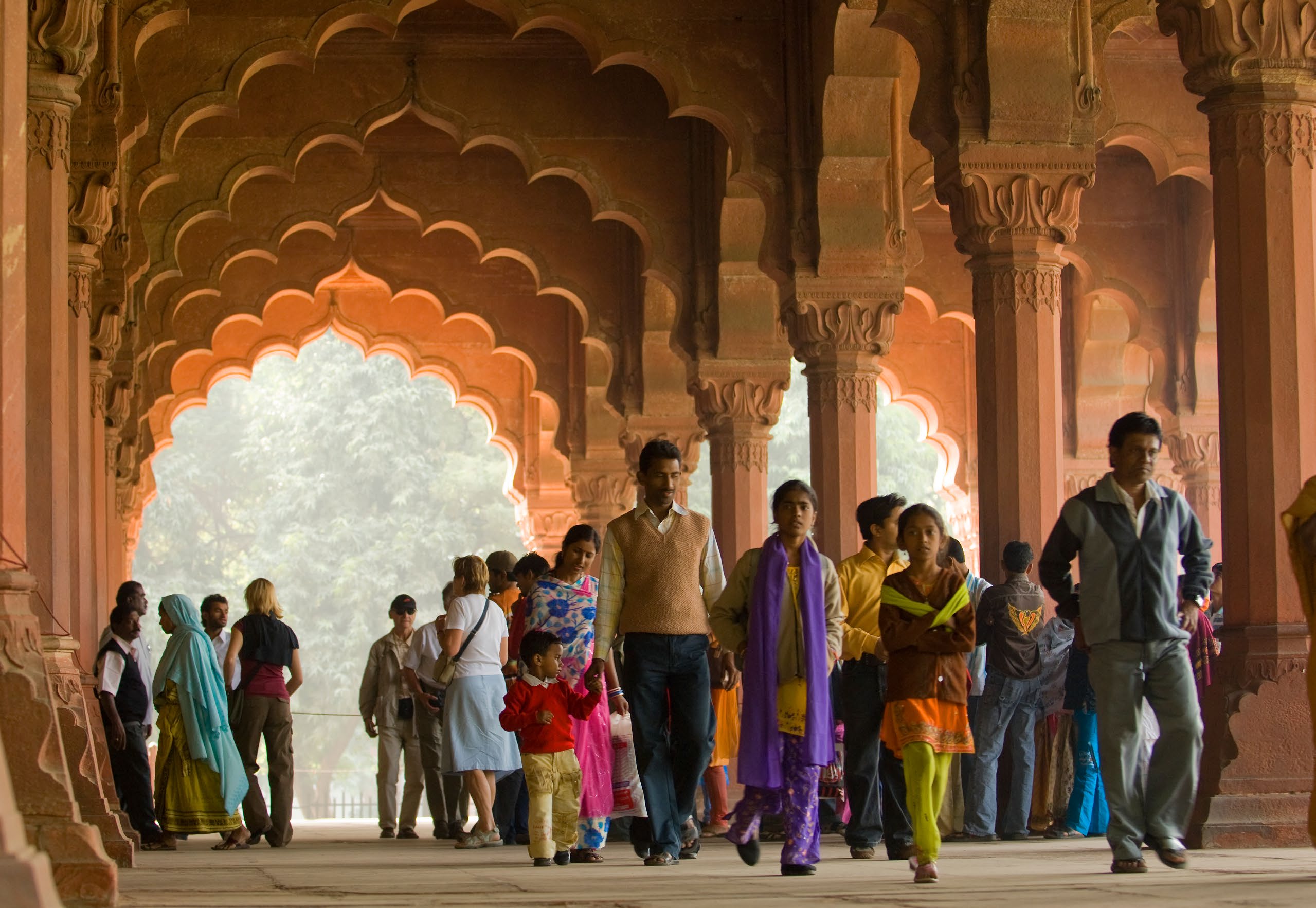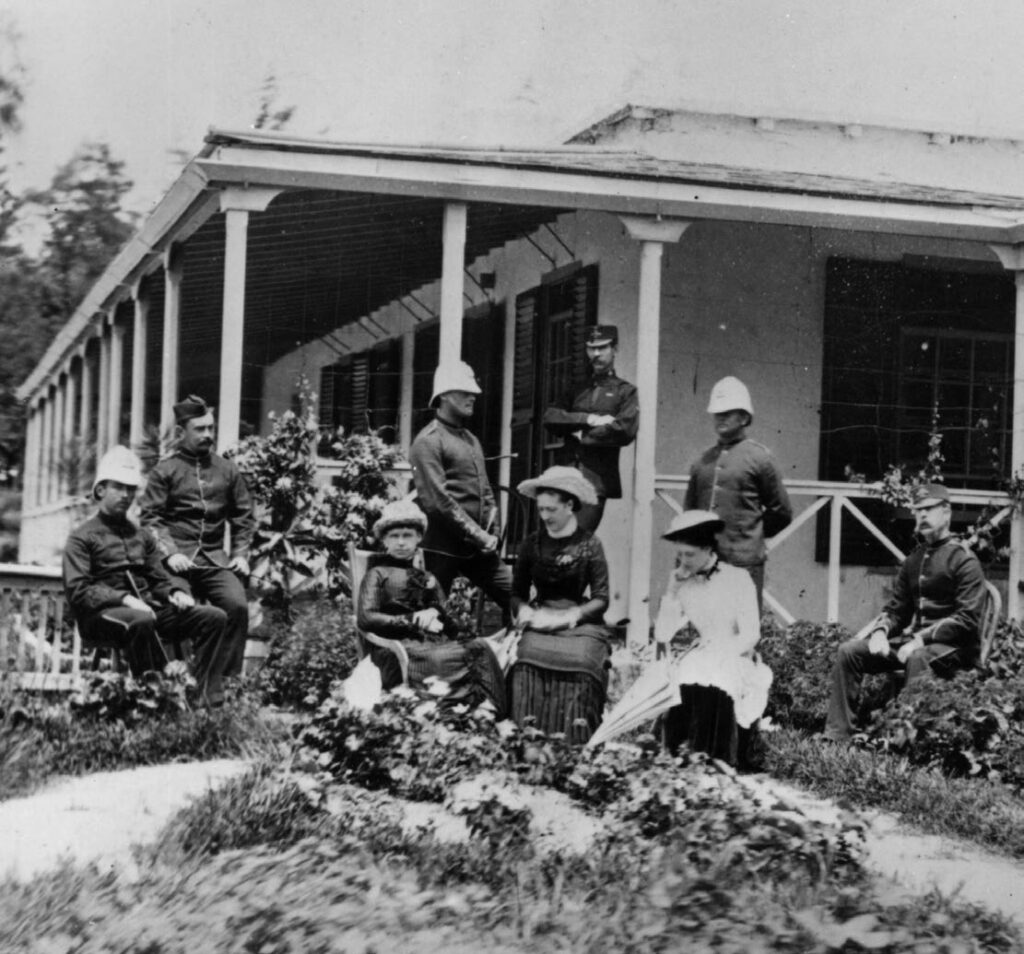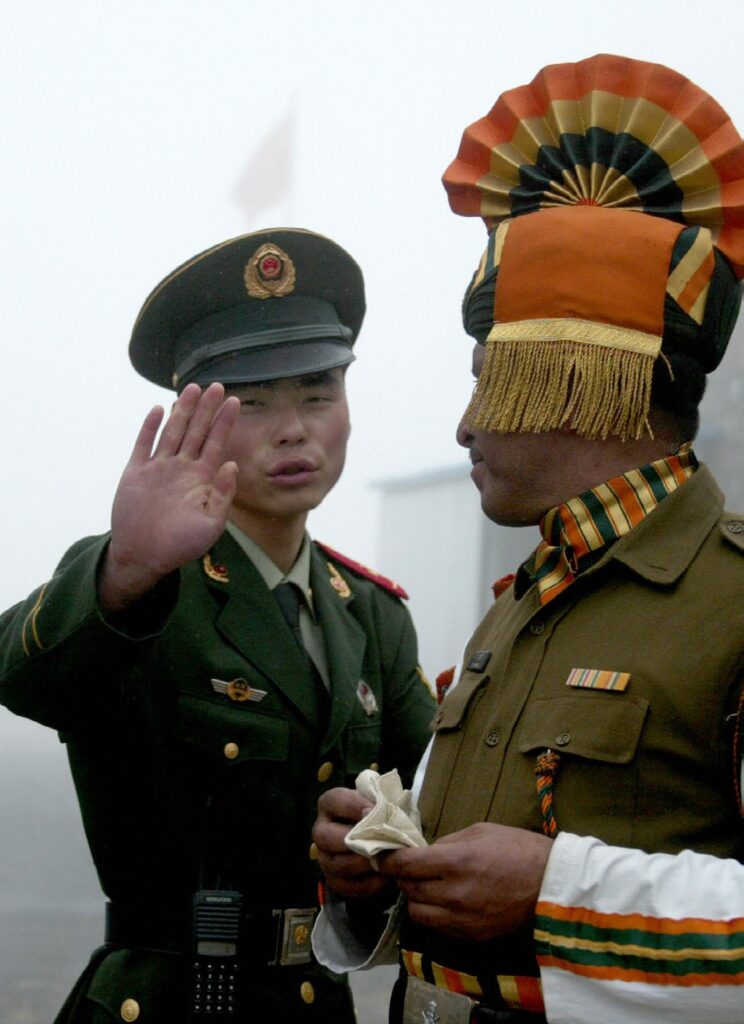
Many are referring to 2023 as the “year of India.” India is the most populous country in the world, and has the fastest-growing economy. India’s economic growth, military potential, and democratic credentials are the reason that countries around the world have welcomed India playing a larger role in the global arena. Indians see their country as a rising global power and have long believed that India has a right to historical greatness. The belief that India, a great civilization, will one day be a great power has meant that not only has India sought a seat at the global high table, but that it has been unwilling to allow the big powers of the day to dictate to it.
The world may look at India through the lens of its struggles with modernity, its economic obstacles, and its demographic challenges. For most Indians, however, India’s centuries-old civilization, its geographic location, its population comprising one-fifth of humanity, its growing economic power and military strength, and its history make it an inevitability that India will be a great power not only in Asia but the world.
Indian Exceptionalism
This “Indian exceptionalism” rests on the faith that there is something unique about India that enabled it to gain independence without violence, revolution, or war. Indian discourse often speaks of an “Indian character” that will overcome odds and circumvent difficulties. For Indians, these are not just feel-good avowals, but rather reflect a deep-seated way of thinking, like the messianic vision of the United States.
Belief in the greatness of Indian civilization lies at the core of Indian nationalism and foreign policy. Indian leaders have often voiced the view that India was a “guide” for the world and had a “mission to fulfill.” [1] In the decades immediately after independence, this desire to be a global leader, albeit a moral one, manifested in the preaching overtones of Indian foreign policy. In recent years, the slogan that India is a “Vishwaguru” (“global teacher”) carries the notion forward. [2]
India’s interactions with the world are framed by civilizational and historical imperatives. It is not unusual for countries to argue that their path is unique and specific. But for India, this is more than a platitude. India has always sought to be viewed as an example to the world: The country is unique in maintaining a democratic system in a poor postcolonial state; its path of economic growth, emphasizing self-sufficiency, is different from others’.
India is a status quo power that has no revisionist ambitions in its neighborhood or beyond. India seeks to be an Asian and a global player, but lacks ideological or territorial ambitions beyond its immediate neighborhood. India seeks recognition as the regional hegemon, but a preeminence that is benevolent and status quo oriented. For India, power projection, both in its immediate neighborhood and beyond, is for recognition of status, not for aggrandizement of territory or rewriting of any global norms.
Indian Military Power Is for Defense Only
India retains a large military without being trigger-happy in deploying it beyond its borders. It sees itself as having global influence without viewing power as only the ability to coerce, unlike other regional or global powers. India does not believe it needs to be a security provider for the world or for Asia; it does not view military aid or assistance as aid. It has a very different view from that of many in the West.
India is already a global power in the minds of its public and officials, who believe the country should be seated at the global high table. For most Indians, India’s claim to the global high table comes from its unique civilization, its democracy and pluralism, its soft power, its economic strength, its geostrategic location, and only reluctantly its military capabilities.
At the core of India’s foreign policy lies a desire for autonomy in decision making, a holdover from the impact of British colonial rule, when that autonomy did not exist. The colonial experience left an indelible mark on India’s collective personality. During the British Raj, Indians were kept out of decision making, and instead subordinated to the interests of their colonial rulers.
The British Indian Empire forced Indians to fight distant wars with which they had little to do. While Indians were involved in local government and administration, they had nothing to do with foreign policy, which remained firmly in the hands of colonial officers and administrators. As a result, the key demand of India’s freedom struggle was the right for Indians to make decisions that affect their lives and their futures, i.e., self-determination.
The pursuit of an independent path was always tied to the moral certitude that India ought to be a beacon not only for Asia, but also for the entire world. India’s policies were framed so as to build a world based on ideals of peace and international friendship. To create this idealized world, India championed nonalignment; encouraged multilateral cooperation through the United Nations and regional organizations; and supported decolonization and disarmament, including universal nuclear disarmament.
Since the end of the Cold War, India’s expanding economic and military capabilities have diminished the need for India to emphasize nonalignment. India is now able to go beyond trying to be a global leader through rhetorical moralizing alone, with the material capacity to engage in a more assertive and actionable foreign policy. Still, India remains averse to joining foreign-led alliances and its desire for strategic autonomy – one of the central tenets of nonalignment – remains unchanged. India wants to deal with the world’s major issues without being tied down to a single great power or set of powers. It does not wish to be in a position where its stance is predetermined by alliance commitments. [3]
Indian foreign policy makers prefer a multipolar world. [4] They believe that India, with its limited economic and military capabilities, can play a role at the global high table only when the world is not dominated by just one or two superpowers. In the past, that view led to India championing third-world nonalignment during the Cold War, and has endured as strategic autonomy in Indian foreign policy thinking through the post-Cold War era.
The future global order is likely to be dominated by a competition between the United States and China. This situation is markedly different from that of the Cold War, when neither of the two competing superpowers were in geographic proximity to India. China is India’s neighbor, and a rival that covets parts of Indian territory. Moreover, China’s desire for influence in South Asia and the Indian Ocean region challenges India in its backyard, setting off competition for the same sphere of influence.
India’s Chinese Predicament
For Indians, China’s rise creates the potential for a clash between two ancient Asian civilizations, intersecting at political, social, security, and economic levels. Since April 2020, troops belonging to the two most populous countries in the world have faced each other in the Himalayan region. This is the fourth time since 2012, and second time since 2017, that India was taken unawares by China seeking to change the ground reality along its border. [5]

A group of British expatriates, some in military uniform, sits outside their house in India, circa 1880. (Hulton Archive / via Getty Images)
India has consistently viewed China’s expanding influence with suspicion. Since the India-China war of 1962, India has noted China’s efforts to build close ties with countries on India’s periphery – thereby possibly trying to encircle it – as well as its efforts to lay the groundwork for military and naval bases throughout the Indian Ocean region. With a population of more than 1 billion, India is the only country with enough manpower to match that of China. Thus, India’s views of China and its policies will have an impact on any global attempt to counter China’s rise.
Today, China is the top trading partner of all South Asian countries, including India. China is the top supplier of arms and military equipment to most South Asian nations. Under the Belt and Road Initiative (BRI), China is also the leading provider of loans and leading builder of infrastructure. China controls important military and economic infrastructure in Gwadar (Pakistan), Hambantota (Sri Lanka), and Djibouti. [6]
For Delhi, the nightmare scenario is not simply a border conflict with China, but the specter of a two-front war with China and its all-weather friend Pakistan. While New Delhi has always been wary of the China-Pakistan relationship, the deepening military dimension has led Indian defense strategists to think of newer ways to combat such an occurrence. India’s response has been to rebuild relationships with countries in the Indo-Pacific region and deepen its strategic alignment with the United States and its allies in Asia.
India and the United States have overcome the distance and suspicions that arose out of India’s refusal to align itself with the U.S. soon after its independence in 1947. The world’s oldest and largest democracies have, over the last three decades, built a deep, multilayered, and likely enduring partnership. The United States views India as a critical partner in the Indo-Pacific, and Washington would like Delhi to play a larger role in South, Central, and Southeast Asia. India sees the United States as a partner in the containment of China, and India’s ties with Russia, a legacy of the Cold War, are not more important to India than the evolving partnership with the United States. India remains at the heart of the U.S. response to its peer competition with China.
India and the Indo-Pacific Strategy
India is central to America’s Indo-Pacific strategy as well as the Pacific Quad, the grouping of Australia, India, Japan, and the U.S., and is a key part of the West Asia Quad or I2U2 – India, Israel, the United Arab Emirates, and the United States. However, India is reluctant to cede power to any collective security mechanism, so as of now neither the Indo-Pacific Quad nor the West Asia Quad has a security dimension.
India is a Major Defense Partner (MDP) of the United States, and the two countries are more aligned today in the military realm than they have ever been in the past. India has signed all four defense-enabling agreements that U.S. defense partners normally sign for exchange of intelligence and technology in the military realm. This has enabled information sharing, bilateral and multilateral military exercises, maritime security cooperation, liaison officer exchanges, and logistical cooperation.
Yet India’s preference for indigenization – namely, Make in India and AtmaNirbhar Bharat – will impose a limitation on how close a defense collaboration the two countries can share. Further, while cooperation in trade and technology between India and the United States has increased substantially, India’s age-old protectionism has hindered the commercial and economic pillar of the partnership to achieve its promise of $500 billion in bilateral trade.
India’s leaders have always insisted that they not only sought to advance India’s own interests, but also to voice the collective interests of developing nations. India has often portrayed itself as an example for other poor and formerly colonized countries, primarily in Asia but increasingly all over the world. Seeing itself as a future major power, India has positioned itself as the voice of equanimity in international bodies, demanding that more powerful nations voluntarily cede some of their influence for the sake of greater fairness in international affairs. This has positioned India well as a partner for developing nations.
India’s economic growth and rise in military capability in the last two decades have only enhanced the country’s desire to play a leading role in the world. India is unwilling to change its policy of issue-based alignment or strategic autonomy, nor its refusal to be a “camp follower.” While India is part of multiple minilateral arrangements with the United States and its allies, it is also a member of BRICS (Brazil, Russia, India, China, and South Africa) and the China and Russia Shanghai Cooperation Organization (SCO). This reflects India’s pursuit of maximum options in foreign relations. It also reflects an Indian desire to create and be involved with international institutions that are not run by Western European powers or the United States of America.
As the president of G20 this year, India hopes to use the September G20 summit to showcase how it has leveraged its soft power, moral stature, and economic and military potential to befriend countries around the world. India also wants to use the G20 presidency to balance its close ties with the West and its historical claim to strategic autonomy and leadership of the world’s have-nots. Prime Minister Narendra Modi declared at the Global South Summit, echoing India’s first Prime Minister Jawaharlal Nehru, “India, on the one hand, maintains close relations with developed countries, and at the same time understands and articulates well, the point of view of developing countries.” [7]

A Chinese soldier gestures as he stands near an Indian soldier on the Chinese side of the Nathu La border crossing between India and China, on July 10, 2008. (Diptendu Dutta/AFP via Getty Images)
India’s long-term goal is to seek reform of the U.N. Security Council such that it might be given a permanent seat in that body. But India also knows that U.N. procedures make such reform unlikely anytime soon. It is, therefore, trying to use fora such as G20 and the Global South Summits to continue advancing the case for reform of multilateral institutions, catering to demands of less-developed countries.
India has always sought a multipolar world order because that is the only way that India, with its capacities and capabilities, will be able to play a role. However, as a status quo power India has never been interested in overturning or changing the world order by force. Instead, it has sought to ensure that its own interests and desire for autonomy were secure, irrespective of the world order – be it the Cold War or post-Cold War era.
India Between Realism and Idealism
For all its vocal moralistic idealism, India’s foreign policy has a hard-nosed realist underpinning.
For instance, India’s primary grievance tied to the Ukraine conflict is geopolitical. India’s response has been a continuation of its past policies. It has consistently avoided taking sides in conflicts, going back to the Soviet Union invasions of Hungary in 1956 and Afghanistan in 1979. Even when Iraq’s dictator, Saddam Hussein, invaded Kuwait in 1990, India refused to go beyond “deploring” the move. [8]
The United States and Europe are India’s top trading partners and strategic partners. India’s relationship with the United States is its closest of any country, and India’s vision of the Indo-Pacific security architecture is closely aligned with that of the United States as well. However, every country’s foreign policy is based on its geographical compulsions and its security interests. It is to hedge against threats along its borders with China and Pakistan that India persists in its Cold War-era partnership with Russia. While the U.S. is now waking up to the prospect of peer competition with China, India has always seen China as a threat. It is in India’s interest to ensure that Russia does not side with China in India-China disputes.
India’s geographical compulsions dictate a preference for a stronger Russia that exerts a check on a rising China. A weaker Russia that is dependent on China creates multiple challenges for India. India’s balancing act must be understood in the context of Russia’s position as its historical – and ongoing – defense supplier. This is a legacy of the Cold War era, when the West was reluctant to share technology with India and the Soviet Union helped build India’s industrial base, especially in the military realm. Russia remains one of India’s top arms suppliers, and 70% of India’s military arsenal is still of Russian origin.
The United States has a natural geographic advantage that India does not, with no threats on its immediate land or maritime borders. India, like many countries in the Global South, would like to manage relations with China while also having the security and other benefits of close ties with the U.S. For its part, the U.S. and many of its allies appear willing to concede that India’s diplomatic leverage and soft power are useful for their goals in a world that no longer sees America as the sole superpower.
China lays claim to large segments of Indian territory and is a greater source of unease for India than were the superpowers during the Cold War. Then, the policy of nonalignment helped India maintain good relations with both the U.S. and the Soviet Union, without having to pick sides during conflicts.
A seemingly bipolar world, with China and the United States as the two contenders for preeminence, is anathema for India as it would force India to make choices between the two countries – something it has studiously avoided doing throughout much of its history.
[1] Nehru, J. (1947). Jawaharlal Nehru’s speech on 22nd January 1947 during the Constituent Assembly Debates. Taken from Constituent Assembly Debates of India, Official Report, Vol. II (20th January to 25th January 1947) http://164.100.47.132/LssNew/cadebatefiles/C20011947.html
[2] Mango News (2014). PM Modi Sydney speech: India will regain its status of Vishwa Guru (teacher of the world) [Video]. YouTube. https://www.youtube.com/watch?v=jHKMC1rxqVE
[3] Ryan, M. (2023, April 29). Key nations sit out U.S. standoff with Russia, China, leaks show.’ Washington Post. https://www.washingtonpost.com/national-security/2023/04/29/biden-foreign-policy-discord-leaks/ The story refers to a conversation between the Indian and Russian national security advisers in which NSA Doval insists India will not move from its principled strategic autonomy stance.
[4] Jaishankar, S. [@DrSJaishankar] (2022, August 18). Tweets [Twitter profile]. From Jaishankar, S. (2022). India’s vision of the Indo-Pacific [Speech given at Chulalongkorn University]. Chulalongkorn University, Thailand. https://twitter.com/DrSJaishankar/status/1560189584843370496
[5] Haqqani, H., & Pande, A. (2021). India has a long way to go in confronting China. The Hill. https://thehill.com/opinion/international/562397-india-has-a-long-way-to-go-in-confronting-china/?rnd=1625936377
[6] House Foreign Affairs Committee (2022). China regional snapshot: South Asia. https://foreignaffairs.house.gov/china-snapshot-project-south-asia/
[7] Ministry of External Affairs, Government of India. (2022, November 8). English translation of Prime Minister Shri Narendra Modi’s remarks at the unveiling of logo, theme, and website of India’s G20 presidency via video conferencing. G20 Research Group. http://www.g20.utoronto.ca/2023/221108-modi.html
[8] Pande, A. (2017). From Chanakya to Modi: Evolution of India’s foreign policy. Harper Collins India.





